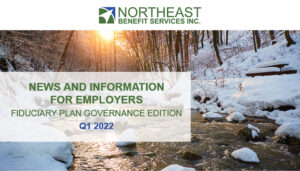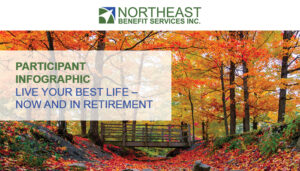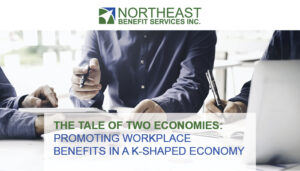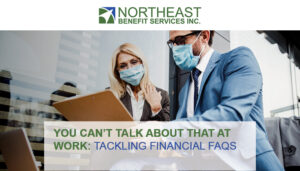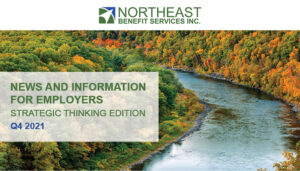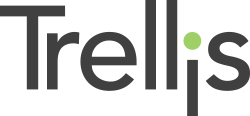
The value-driven workplace and its implications for retirement plans
Your workplace may be evolving in many facets, from remote options to new generations coming into the workforce. These changes reflect those of the larger social climate and, in turn, employee priorities, values and expectations. Many professional and financial decisions are being influenced by these trends, as 53% of consumers are now “value-driven.”[1]
Some of the progressing values represent environmental, social and governance factors, known collectively as ESGs. These factors correspond to an array of investments that reflect a company’s interest in sustainability efforts; they can be offered to employees as part of their 401(k) lineup. ESG funds are becoming increasingly present, with nearly $20 billion in annual flows during 2020.[2]
- Environmental: greenhouse gas (GHG) emissions, climate change, renewable energy, energy efficiency, waste management, etc.
- Social: human rights, labor standards, workplace health and safety, employee relations, diversity, consumer protection, etc.
- Governance: board structure, size, diversity, skills and independence
Companies frequently look to display their devotion to the environment around them and in the workplace, ranging from efforts like Diversity, Equity and Inclusion (DEI) within the workforce to issues regarding climate change.
Efforts that reflect a company’s commitments, like ESG investments and sustainable purposes, can project not only a positive brand image but also continually work to align company goals with investments and employer loyalties with employee values.
Four Types of Involvement
Now, don’t feel like you need to adjust your investment lineup right this moment. As a fiduciary, you have a duty to act in the best interest of the plan and its participants. ESG funds can also be considered at different levels of involvement. Before diving into sustainable investing, decide on which, if any, of the four approaches your investment lineup might want to take.[3]
ESG Integration is the most conservative option for firms entering the landscape. This approach considers ESG factors along with others when creating investment profiles, with the primary goal of achieving promising returns.
Exclusionary Investing entails the exclusion of certain companies or sectors that do not reflect a company’s sustainability values. An example would be not investing in the tobacco industry, as many have done in response to health concerns and the related environmental impact.
Inclusionary Investing focuses on actively seeking out ESG-centered entities to invest in as opposed to rejecting certain companies or sectors.
Impact Investing is the most engaged strategy, where a company dedicates its investing practices to achieving a positive difference in an environmental or social arena in addition to producing returns for its employees.
What Do You Believe In?
To get an idea of what sustainable topics you, your firm and your employees may resonate with and consider investing in, the United Nations Sustainable Development Goals (SDGs) can help.[4] These goals “address the global challenges [the world] face[s], including poverty, inequality, climate change, environmental degradation, peace and justice”, and are the focus of many ESG funds.[5]
Examples of the SDGs:
- Good Health and Well Being
- Gender Equality
- Affordable and Clean Energy
- Decent Work and Economic Growth
- Sustainable Cities and Communities
- Climate Action
Identifying your firm’s values and objectives can help reveal the best ways to align with those of current and future employees and learn how they want their benefits packages to be structured.
Looking to the Future
As new generations enter the workforce, they expect diverse and sustainable portfolios. More than 85% of all investors now express interest in ESG investments, specifically those addressing global warming and climate change.[6] This percentage increases with each younger generation – the future of the American workforce. Sustainability, the impact of plastic on the oceans and data fraud and theft are also top considerations for consumers interested in ESG fund investment.[7]
ESG funds may be a promising element of 401(k) investment lineups for plans, employers and employees in the coming years. Consider if and how they represent your firm and its employees, but more importantly, how they may or may not fulfill your fiduciary duty to act in the best interest of your plan and its participants.
As ESGs become more readily available and your company continues to evolve, we are here to help by discussing your options and identifying efforts that may help align your company with future goals and employee values.
Larry Kavanaugh, Jr. AIF®, CPFA, CLU, ChFC
950-A Union Rd. Suite 31
West Seneca, NY 14224
716.674.7200
L.Kavanaugh@nebstpa.com
www.nebstpa.com
This information was developed as a general guide to educate plan sponsors and is not intended as authoritative guidance or tax/legal advice. Each plan has unique requirements, and you should consult your attorney or tax advisor for guidance on your specific situation.
©401(k) Marketing, LLC. All rights reserved. Proprietary and confidential. Do not copy or distribute outside original intent.
[1] “Sustainable Investing for a Sustainable Business.” New York Life Investments, 2019.
[2] Hale, Jon. “Sustainable Funds U.S. Landscape Report.” Morningstar Direct, 10 Feb. 2021.
[3] “New York Life Investments Guide to ESG Investing.” New York Life Investments, 2020.
[4] “The 17 Goals | Sustainable Development.” United Nations, United Nations, 2015.
[5] “Take Action for the Sustainable Development Goals – United Nations Sustainable Development.” United Nations, United Nations, 2015.
[6] “Sustainable Investing for a Sustainable Business.” New York Life Investments, 2019.
[7] “Sustainable Investing for a Sustainable Business.” New York Life Investments, 2019.

